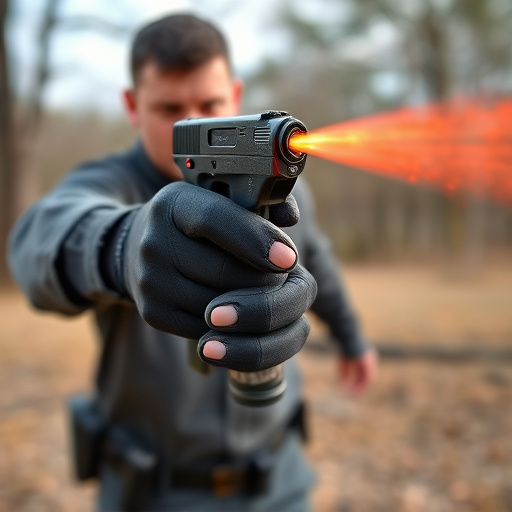Concealed pepper spray carrying techniques are vital for personal safety, allowing users to legally and discreetly defend themselves in emergencies. These methods involve securing the spray in accessible yet hidden locations or using specialized holsters. Best practices include regular practice, local law adherence, environmental awareness, and proper handling to ensure effective self-defense without endangering others.
“Uncover the power of concealed pepper spray carrying techniques as a crucial self-defense mechanism. This comprehensive guide explores how this non-lethal weapon serves as a deterrent in dangerous situations. We delve into the science behind pepper spray, its effectiveness, and practical methods for secure storage and deployment.
Learn about the legal landscape surrounding concealed pepper spray, ensuring responsible ownership while exploring essential safety precautions to maximize its potential as a personal defense tool. Discover expert techniques for discreet carrying, making it an invaluable asset in your self-defense arsenal.”
- Understanding Pepper Spray as a Deterrent
- Concealed Carrying Techniques: Methods and Best Practices
- Legal Considerations and Safety Precautions
Understanding Pepper Spray as a Deterrent
Pepper spray, a non-lethal self-defense tool, has become an essential deterrent for individuals seeking protection against potential threats. As a chemical agent, it temporarily incapacitates the target by irritating the eyes and respiratory system, allowing users to escape or render an assailant non-threatening. Understanding how pepper spray works as a deterrent is key to utilizing it effectively, especially when combined with proper concealed carrying techniques.
Concealed pepper spray carrying techniques play a vital role in ensuring easy access during emergencies. These methods enable individuals to discretely and legally carry pepper spray while adhering to local regulations. From holsters designed for subtle carry to specialized belts or pockets, these techniques allow users to have a deterrent at the ready without drawing unnecessary attention. By mastering such carrying techniques, individuals can enhance their personal safety, providing them with peace of mind in potentially dangerous situations.
Concealed Carrying Techniques: Methods and Best Practices
Concealed carrying pepper spray is a practical self-defense strategy, but it requires skill and discretion to do so effectively. One common technique involves securing the spray in an easily accessible yet discreet location. This could mean hiding it within a backpack or purse, strategically placed in close reach, allowing for swift retrieval during an attack. Another method is to utilize specialized holsters designed to fit pepper spray cans, ensuring they remain untouched and ready for use while maintaining a low profile.
Best practices include regular practice of drawing and deploying the spray from various hidden positions, as well as training in proper aim and distance. It’s crucial to familiarize yourself with local laws regarding concealed carry, ensuring compliance to avoid legal repercussions. Additionally, understanding your environment—identifying potential threats and safe havens—enhances your overall safety when carrying a concealed deterrent like pepper spray.
Legal Considerations and Safety Precautions
In many jurisdictions, the legal status of pepper spray as a self-defense tool varies widely. It’s crucial to understand local laws before carrying pepper spray for personal protection. Some areas allow individuals to legally carry pepper spray for self-defense, while others may restrict its use and possession. Concealed pepper spray carrying techniques can be an important consideration for those seeking to protect themselves in potentially dangerous situations. Learning proper handling and deployment methods ensures the safe and effective use of pepper spray as a deterrent.
Safety precautions are paramount when dealing with pepper spray. Users should receive adequate training on its application, as incorrect usage could lead to unintended consequences or even harm to oneself or others. Storing pepper spray securely and keeping it out of reach of children is essential. Additionally, regular maintenance and understanding the spray’s shelf life are vital to ensure its effectiveness. Responsible use of pepper spray involves targeting specific areas to disable an assailant temporarily, allowing for escape or help arrival, while minimizing impact on bystanders.
Pepper spray, as a powerful personal defense mechanism, can be an effective deterrent when used properly. Understanding its application and legal implications is crucial for anyone considering concealed carrying techniques. By mastering the art of discreetly storing and employing pepper spray, individuals can enhance their safety while navigating potentially dangerous situations. Remember, knowledge of local laws and responsible handling are key to ensuring this self-defense tool remains a reliable option for personal protection.
